Taking some time out
Reading for pleasure, February 2024 - Ruth Anderson KC and David J Dickson
The Mother by T M Logan (Zaffre, ASIN B0B6ZXR2J5, £8.99; ebook £0.99)
The Mother, by the multimillion-selling author T M Logan, is a first-person, predominantly present-tense narrative by Heather, mother of the teenage Finn and Theo, and convicted murderer of her husband Liam. The opening scene of the book is Heather’s own funeral, which she discreetly attends, making her heart “into a stone” on page one when she sees her two sons in the front row of the church. Prepare therefore to suspend your disbelief right at the outset as the plot, stretched over 400 pages, becomes increasingly improbable. The date of the funeral is 22nd September 2023, helpfully set out in bold letters at the beginning of the three-page prologue.
Chapter one, headed 12th July 2013, takes the reader back to the day of Liam’s homicide and chapter two brings us to 1st September 2023, the date of Heather’s release from prison. Clearly a lot happens between those two dates and the action moves broadly between July 2012 and the autumn of 2023 – so very contemporary.
I found little to appreciate or enjoy in this thriller. I did, however, find much to irritate me. Attention to the rules of grammar and detail was careless, e.g. phrases such as “leaving Jodie and I alone in the house”. One character early in the novel had aged little over the intervening 10 years, but unfortunately was showing every one of those 10 years on her face 30 pages further on. There were dozens of sentences that were not sentences at all. Some readers will find no difficulty adapting to this style of writing, but I cannot stop myself waiting for a verb that does not appear on the printed page. As a consequence, I struggled with these interruptions in the language.
My recommendation to suspend your disbelief should be applied to a variety of topics in this thriller viz:
- The circumstances of Heather’s release from prison;
- Her initial interview with her probation officer;
- The actions and attitudes of Liam’s family and Heather’s complete lack of external support (with the exception of her now dead mother);
- The events leading up to her attending her own funeral.
I could go on but will not. Maybe I tend to take the wrong approach to novels like this one. Perhaps I should try harder to go with the flow.
Ruth Anderson KC
Munich Wolf by Rory Clements (Zaffre, ASIN B0C8HQLNTJ, £16.99; ebook £8.99)
We could just say Rory Clements does it again. However, we had better say more about this superb, taut thriller set in Munich in June 1935.
The Nazis have power and have done so for a couple of years. Their spider’s web of fear and informants is expanding and developing. Munich, the birthplace of Nazism, is seen as a place to visit on the European tour by young aristocrats. We are introduced to Unity “Bobo” Mitford, who was an early ardent admirer of Hitler and whose sister, Diana, married British fascist Oswald Mosley. She has a gaggle of young women and men around her. One or two see her for who she is; others do not.
Frances de Pole is one member of the group. She has been friendly with Herr Regensdorf, who lives in an enormous mansion on Karolinenplatz, then a circular space surrounded by one house bigger than the other. It is but a stone’s throw from the epicentre of Nazi life, namely Brown House.
Detective Sebastian Wolff lives with his mother and son, the latter an enthusiastic member of the Hitler Youth. Wolff ends up in Dachau, from which he is quickly released. He is then assigned a partner, who is a member of the Bavarian Political Police, the Bavarian equivalent of the Gestapo. Wolff has a guardian angel, but for how long?
A young British aristocratic woman is murdered. The signing of a new pact with the UK is about to be disturbed unless her murder is quickly solved. Hitler is said to be particularly interested in ensuring everything is sorted out as soon as possible.
There are strange runic markings on the body. Inevitably, more turn up. And so opens a genuine page-turner of a thriller. The Nazi idea of justice is displayed. The Nazi belief in völkisch background and the occult also come to the fore.
This is a standalone novel with a new character in Wolff. As with all Mr Clements’ previous books, his ability to capture the atmosphere of the city and its times is astonishing. He describes the city superbly, clearly underpinned by extensive research, for example, Schellingstraße. Located on this street were Hitler’s favourite restaurant (still there), Heinrich Hoffman’s photographic studio, where Eva Braun initially worked (building still there), and the Völkischer Beobachter, the Nazi propaganda newspaper.
All we can ask is that Wolff becomes a returning character we can join in the deft story-telling talents of Mr Clements’.
Written by David J Dickson, Solicitor Advocate






